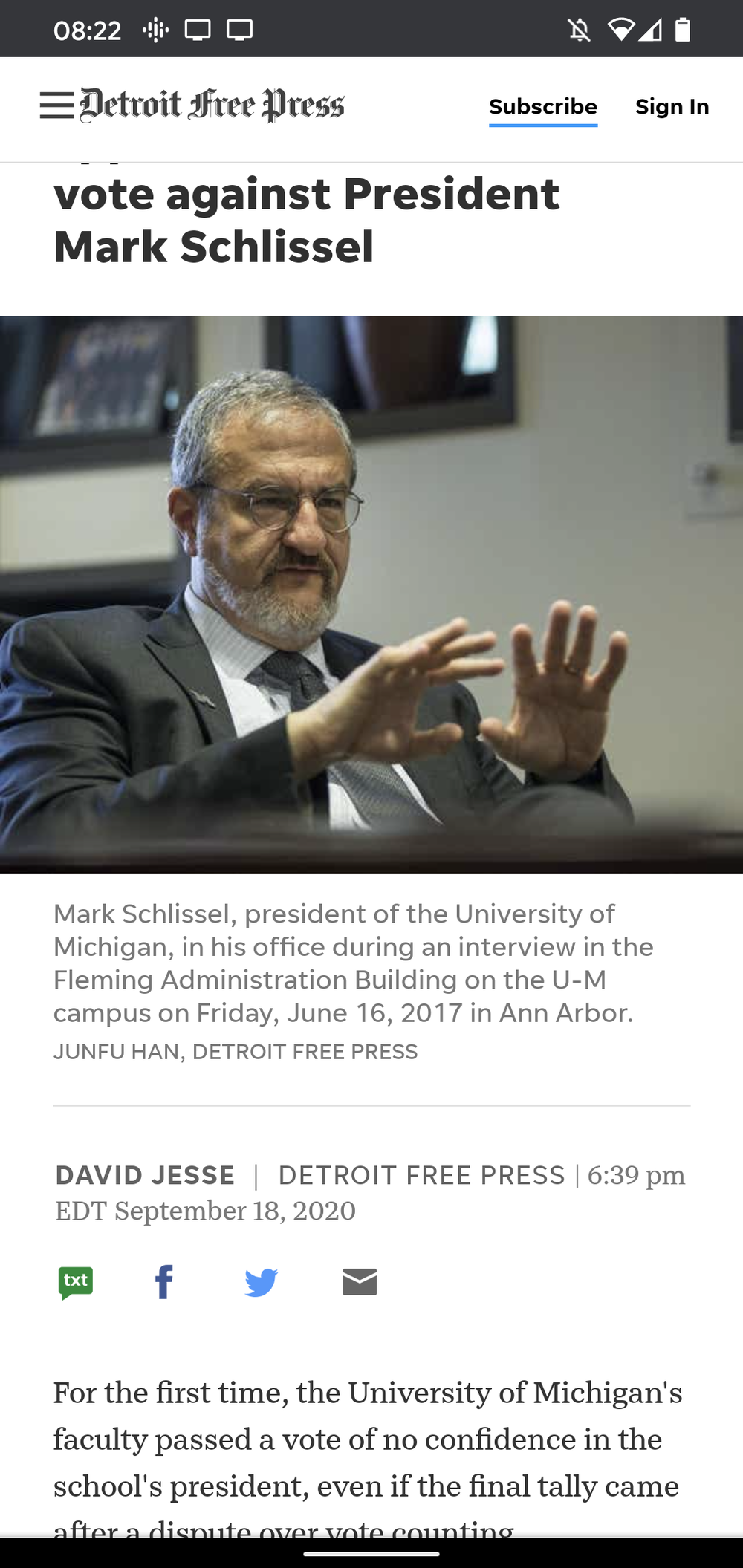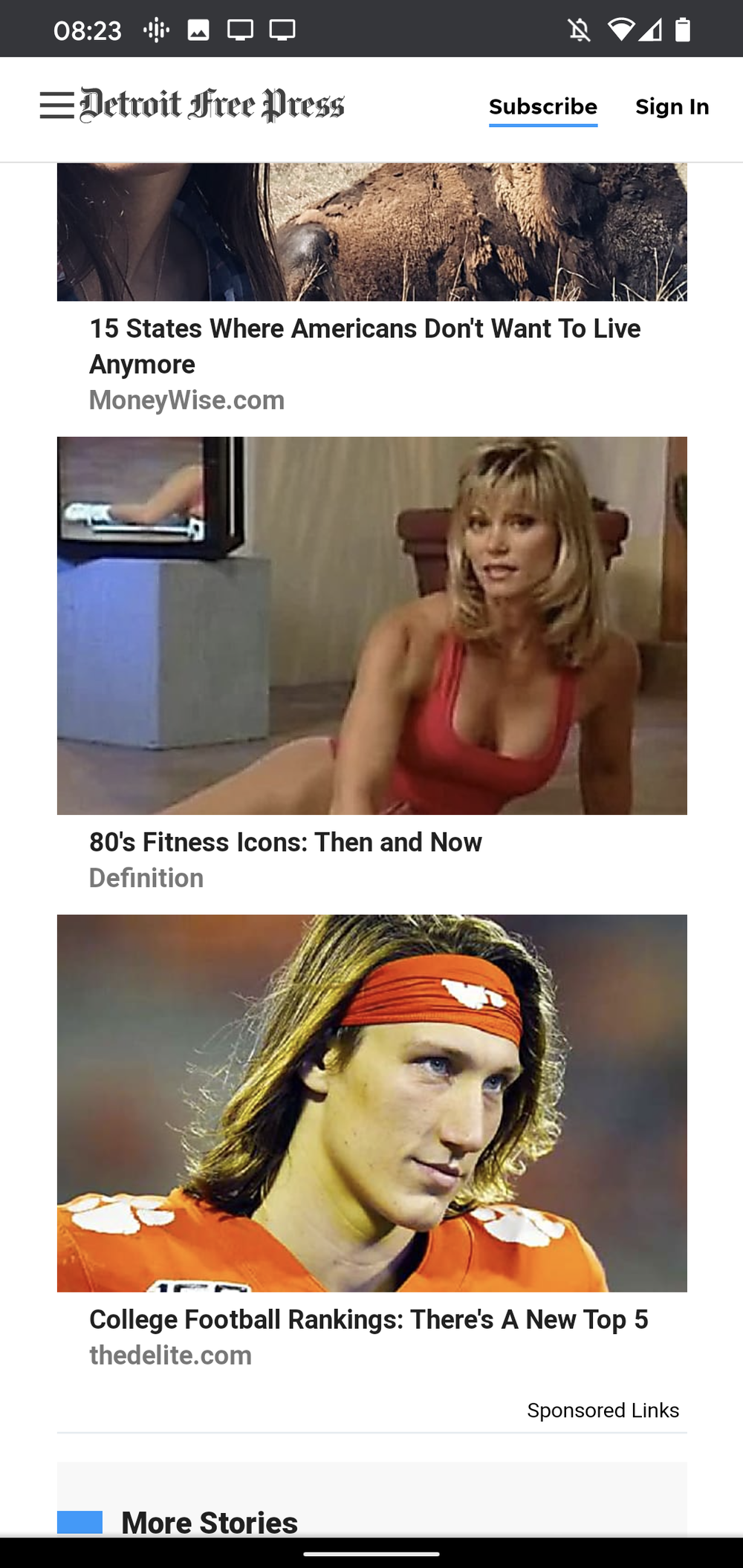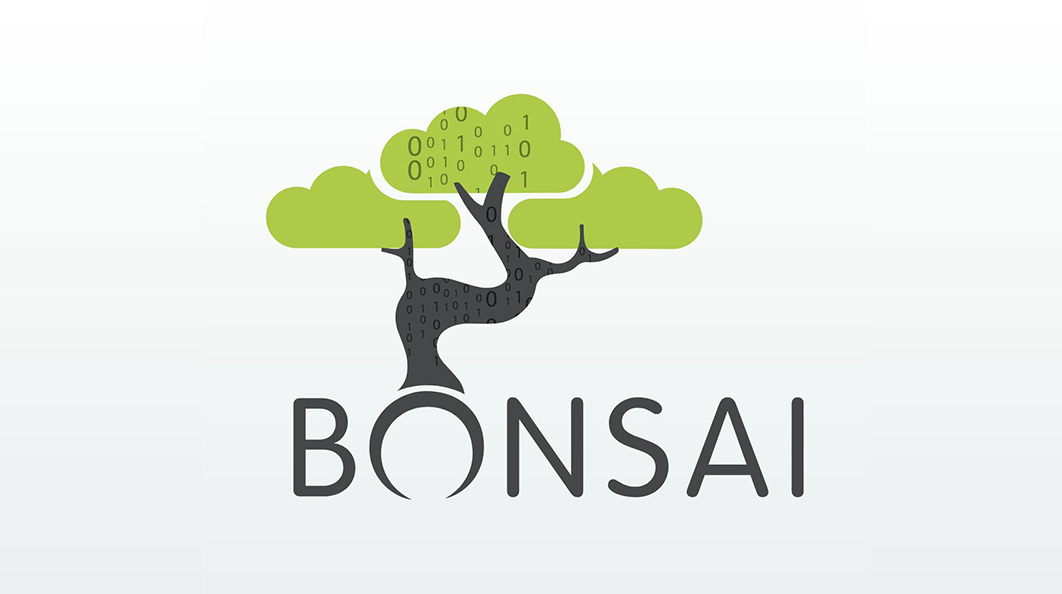We’re told machine learning and artificial intelligence will forever alter human existence. Examples focus on facial recognition, self-driving cars, and personalized medicine using machine learning’s capability to process unprecedented data volume. We think of world-changing ML as imminently close, but yet to arrive. I love a good story, but this one omits a crucial detail. The world’s information access completely transformed in the last 20 years. Machine learning remains wholly responsible for this transformation. A tech-savvy reader might roll eyes and say “Yes, we know machine learning goes by many other names. Is this just another article about Google, Larry Page, and PageRank?”
An article about Google? Yes. But this one’s not about PageRank. While PageRank set the stage for complete world transformation, it didn’t directly amass history’s greatest cash pile and shift global economics. One less-discussed remains responsible for that, another machine learning marvel hidden underneath a corny name. Let’s explore this lesser-publicized enigma and see how it changed the world for better – and worse – these last twenty years.
The Good: Quality Score
It’s been nearly 20 years since Google Ads went to a “cost-per-click” model in 2002. Ever since, Google’s powered their CPC capability with technology publicly named “Quality Score”. Quality Score built humanity’s most lucrative revenue and profit engine to-date.
The chief functions of Quality Score are twofold:
-
Quality Score predicts what paid search ad a user is likely to click on. Click-prediction capabilities allow Google to confidently determine a unique CPC price for all advertisements shown, prior to users clicking through, all while minimizing opportunity cost to Google. Advertisers also benefit, since Google can afford charging participants the minimum CPC allowable to retain their placement in paid search results.
-
Quality Score also predicts whether each advertisement will satisfy user’s needs, which ensures users will come back to Google and search again. This long-term value prediction keeps ads on top that are both compelling to click-on, and deliver long-term user value.
Quality score’s final trick is it’s precision – delivering a short-term and long-term value prediction unique to every ad, on every query, from every user. The only thing this machine learning model needs are more unique ads, queries, and users to accrue data for Quality Score to effectively optimize and consistently grow Google’s CPMs across billions of queries every year. Throw in the added bonus that this model happens to deliver robust advertiser value (advertisers reach high-value customers simply by participating), and Google has millions of advertisers investing billions of dollars annually on their search platform.
Like other ML, there’s no static “formula” broadly descriptive of Quality Score. The factors that impact the model are known, but the algo continuously learns and adjusts it’s calculations based upon data it continually collects. Limited only by the thoughts, questions and desires of global Google user base, Google’s Quality Score algorithm remains the world’s most profitable machine learning model ever created (though Amazon and others are catching up), and catapulted Alphabet into the annals of business history.
The Bad: Click-bait Economics
Such prosperity inevitably comes with unintended consequence. Looking back, Quality Score was just too good for it’s time. What resulted are the desperate throes of competitors scrambling to retain a presence in the future of digital media, content and business. I don’t know the full story on how it all started, but I imagine it involved panicked Monday morning conference rooms where conversations went a little something like this:
[SCENE: DIGI-BANNER CORP’S swanky office, glass windows, sun shining through. Boss finishes reading splashy magazine feature on the newest Silicon Valley star, Google]
“So how’s our pipeline looking this week?”
“Boss, our two biggest accounts just turned on Google AdWords for the first time. Our contacts told us they are paying only for the clicks they buy – no impression costs at all.”
“God I hate these gimmicks. Giving away ad impressions? Wonder who’s funding this. Well, it won’t last.”
“Boss, they moved a lot of budget out of next months insertion order.”
“How much?”
”200K.”
[Silence]
“You said they are getting impressions for free from Google?”
“Yes sir. Paying only for clicks. Couldn’t stop talking about it. Asked us if we had anything similar.”
[Silence”]
“Linda, Roger, Mo – starting tomorrow, we’re going to start charging per-click. Figure out how to do it. Joe, call them back and tell them to keep their old IO – we will only charge for clicks.”
“Okay, Boss.”
Linda: “Boss, we don’t have a billing mechanism, a database for clicks, or any way to charge CPC-”
“I don’t care team. We need to follow fast. Figure it out by tomorrow.”
Before this, advertising wasn’t a complicated business – you monetized content by accepting negotiated advertiser payments for a certain volume of audience exposure. The advertiser decides if it’s valuable, the publisher simply provided the audience.
This little tweak – a company that could “give away impressions” yet make more money per-impression and generate more advertiser returns than other platforms – came thanks to the magic of Quality Score. With this came the emergence of CPC advertising. DIGI-BANNER CORP – and every other digital ad network not named Google – scrambled to keep enough advertisers to stay in business. Things start to go terribly awry.
The drumbeat grew louder:
“We demand CPC!”
— Advertisers
DIGI-BANNER CORP knew they needed to monetize impressions, but accept payment in clicks. What did they know about predicting clicks? Nothing. This is a problem. If DIGI-BANNER CORP has no sense for what their audience will click on, they’ll pick random ads to show on the screen. If Quality Score-powered competitors know far better what ads are likely to get clicked, they’ll show ads with higher click potential, accrue more clicks, win more revenue, and eventually put DIGI-BANNER CORP out of business.
DIGI-BANNER CORP’s team came to a realization. It involved reverting to a lowest-common-denominator, but it might work. Linda, Roger and Mo went back to the boss. They tested their solution. Click volume increased. CPCs came flooding in. Their swanky office stayed open.
So what did they do? see if you can see spot the formula:

Pictured Article monetized by the ads found below.

Seems to be a theme…

Across these ads…

And it’s not Michigan!
While not rising to the level of vulgar or untoward, the ads above have two things in common: skin and lists. Turns out that regardless of who you are, nothing captures our short term distraction better than risque photographs or the promise of scandal. Since the ad network doesn’t know anything important about me, they’ve defaulted to cheap thrills. Even if I don’t click this time, I’ll click on something eventually.
Not only are these click-bait ads evident of no true click prediction, the “businesses” these ads are sponsoring – Mentertained, SportzBonanza, etc. are themselves “click-farms” – content portals meant to profitably arbitrage publisher revenue by generating as many ad impressions over as many pageviews as possible. The world’s most prestigious and legitimate news sources support themselves with click-bait – paid for by businesses who generate more click-bait.
Is this the idealized user experience promised by cost-per-click? For the millions of us who click-through on these remnant content pits of the internet, almost everyone has the same feeling the instant they see the landing page: total regret. Why did I click on this garbage? There’s never an iota of interesting content, or even salacious gossip, it’s simply the same nonsense every time: ad bombardment somehow more disappointing than the crappy link you clicked on to begin with.
And here lies the fallout of great machine learning achievements like Quality Score. We have elevated user and advertiser expectations:
Users: “All information must be freely available and at my fingertips!”
Advertisers: “I should only pay for when users click, and I should get free impressions!”
with a world largely incapable of delivering on that future. It’s not that the rest of the open advertising internet had poor machine learning models. They operated machine learning business models without any machine learning capability.
It Was All A Misunderstanding
Misunderstanding what makes Google’s unique CPC solution so effective created a value crater in the open internet we’ve only begun to repair. This misunderstanding permeates across advertisers, outsiders, and even inside Google.
Impressions were never free. Impressions aren’t free on Google Paid Search today! If you search for your ad on Google, and think “Don’t click! I don’t want to pay for this ad slot.” GUESS WHAT – YOU’VE ALREADY PAID FOR IT. It doesn’t matter at all if you click on the ad or not. So long as that’s not the last dollar you spend on Google’s platform, you’ll get the next click slightly cheaper thanks to your click today, or you’ll pay slightly more for the next click if you avoid doing so. If you feel very confused by this concept, it’s okay, you are in great company. The reality is, you are paying for the impression whether you know it or not. Moving money from CPM advertising to CPC advertising because “the impressions are free” completely misunderstands how Google’s media pricing and CPCs work.
The Cost-Per-Click (CPC) Model Was Never Magic: It’s true, on a search engine – an information retrieval system – the definition of success is finding the right link of information which you then can click-through. Pair that with a company smart enough to learn click-prediction, and you have one hell of a three-part ecosystem that sustains success.
But the magic fades when the user’s intent isn’t information retrieval! When you are reading the news, the last thing you want to do in the middle of a good story is accidentally click away. Most people don’t have a problem with sponsors or advertisements alongside great content – our attention has been sold across every media for hundreds of years. What we never asked for was to be purposefully coerced away from the task at hand. A well placed advertising impression to the right person at the right time will generate far more value for the business, and far more satisfaction for the user, than hijacking time and intent.
Users Return To Valuable Experiences & Advertiser Budgets Follow Users:
The digital advertising ecosystem chased clicks they couldn’t generate, to answer advertiser demands that we’re misplaced, to replicate a pricing model that didn’t deliver publisher and advertiser returns, all while disappointing and irritating users. So what’s the outcome? Tons of clicks, but fewer dedicated users and loyal subscribers. Content publishers scraping meager revenues, and ad networks going bust anyway. The hard lesson here is that while well-applied machine learning can win the game, it cannot change the rules. Publishers thrive when they bring in advertiser budgets, and budgets follow productive audiences. No pricing magic or machine learning will ever change that.
Machine Learning’s Second Act
Twenty years or so after Quality Score, we have a digital ecosystem built upon dubious click-prediction models, and true, value-adding machine learning opportunities largely still awaiting companies to invent them. There have been some examples:
- Amazon’s good at predicting items I might like to buy
- TikTok excels at discovering users unique viewing tastes
- YouTube made video ads more relevant yet skippable
- Facebook solved how to keep our brains scrolling for dopamine hits
Each of these companies enjoy enormous success. The common thread amongst the examples? They each used machine learning to solve for the context of their audience: We come to Amazon to shop, TikTok to laugh, YouTube to binge and Facebook to dopamine scroll.
If more publishers, advertisers, and networks invested in machine learning to solve valuable and unique outcome prediction, we would have a healthier internet and a mentally healthier citizenry.
What Can We Do Now?
Had real ML (pCTR) been easily discernible from bullshit ML (click-bait economics), we might trust ML more and have a noticeably healthier publisher ecosystem. Our daily digital existence might be far more positive as well. Alas, here we are. So now what? Here’s a few bits of practical advice.
For Users:
We’re well trained to focus on future machine learning and AI risk, yet miss the fixable ML and AI risks that surround us.
Advertisements stalk us, chatbots answer questions we’ve never asked, and automated systems inundate us with click-bait on web pages, emails and text messages. We’ve asked for our information and entertainment to be paid by trading valueless, distracting and corrosive interactions – fleeting bits of attention and eyeballs for things we’re drawn to by our base instincts. We cavalierly corrode our own time-value and contribute to the worst of today’s ML.
Instead, we need to welcome good AI in our lives.
- If you are shopping, and a company’s ML helps you shop, use their service!
- If you are studying, and an ML technology helps you better learn, use the service!
- If you are trying to accomplish anything, and ML makes it easier, embrace it.
Conversely, if you are responding to an algorithm actively distracting you from your task at and, stop feeding that beast. And finally, if you do nothing else:
Pay money (subscribe) for quality content you consume! This was a concept entirely commonplace less than 20 years ago. You should be free to discover and consume the world’s information, true, but trying to get it for free will always bring consequences.
For Marketers:
Realize the model you are buying requires technology underneath to be viable for them as as an ad technology, but also you as an advertiser. At the end of the day, you are simply paying for space on a page in front of a user.
- Given the option to pay CPC? Ask: How does the platform predict clicks?
- Given the option to pay-per-view (CPV)? Ask: How does the platform predict views?
- It’s Okay to pay for CPMs! You are not getting a worse deal by agreeing to pay for impressions directly! Your skill as a marketer matters once again: find valuable eyeballs.
- Finally, cost-per-click ads provide no free impressions. They are simply CPM ads, where you pay by click installments. You are much better off paying for impressions shown to the right audience than you are getting high click-through rates from CPC ads shown to people who have no interest in your business whatsoever.

